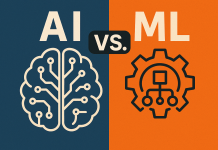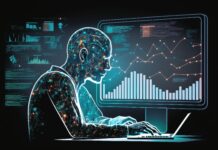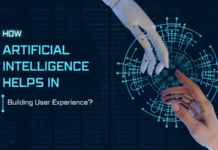Every day, organizations are creating a large amount of data. However, it should be noted that the data in its raw form is not very useful and it can only be useful when it is analysed, interpreted, and transformed into useful information. The AI based decision making is changing the way that organizations are conducting their business by learning from data to gain insights that can be used to make better decisions. Using techniques such as machine learning, natural language processing and advanced analytics, AI enhances judgment, decision making and performance in organizations across various industries.
The Importance of AI in Decision Making Processes
Traditional decision making was based on past data, experience and purely intuitive decision making and logical reasoning. However, such approaches have their weaknesses in terms of scalability, accuracy, and flexibility in the dynamic business environment. AI assisted decision making solves these challenges by providing instant analysis of data, pattern recognition and decision making on real time information.
The three main ways through which AI enhances decision making are;
- The ability to analyse large amounts of data – AI can analyse large amounts of data sets that are beyond the capacity of human beings within a short time.
- Predictive Analytics – ML models use the historical information to make predictions of the likely outcomes and thus guide companies on the best actions to take.
- Intelligent Automation – Artificial intelligence systems emulate the problem-solving capability of a human mind and improve their decision making with every iteration.
Thus, the combination of these capabilities helps the organizations to reduce the cycle time of decision making and arrive at the right decision with minimal or no human involvement.
Key Technologies Powering AI-Driven Decision-Making
Enhanced technology facilitates greater data analysis and intelligence extraction which is fundamental for AI-driven decision-making.
Machine Learning (ML) as well as Deep Learning (DL)
With the help of ML algorithms, both structured and unstructured data is analysed for trends, information classification, and predictions. These processes are automated using deep learning, a more advanced form of ML incorporating the use of neural networks for simulating human reasoning as well as improving pattern recognition. Such technologies allow businesses to automate decision-making processes and gain insights that were previously hidden.
Reinforcement Learning
This AI technique allows systems to learn optimal decision-making strategies through trial and error. By rewarding desirable actions and penalizing undesirable ones, reinforcement learning is used in applications such as robotic process automation (RPA), financial trading, and gaming AI.
Natural Language Processing (NLP)
Natural Language Processing (NLP) is a branch of artificial intelligence that has the capacity to comprehend, interpret and even produce a human language. This technology is useful in document processing, analysis of sentiments, and the use of chatbots. Organizations are able to gain insights from textual data through these processes. NLP powered decision-making helps businesses to manage customer queries, watch over social sentiments, and ease communication.
Big Data Analytics
AI greatly benefits from huge data sets which is possible with the new technologies big data as well as provided the ability to store and process vast amounts of information. These new AI technologies such as cloud computing, new generation of distributed databases, and real-time analytics make it possible for AI models to access and analyse data with a level of speed never experienced before.
AI-Driven Decision-Making in Business Applications
There are numerous ways that decision-making through AI is being used by organizations in all kinds of industries to improve operations, reduce risk and increase productivity. These are some applications that key
Improvement in Diagnosis and Treatment Plans in Healthcare
AI diagnostic tools understand medical images, identify diseases, personalise treatment AI steering personalised treatment plans. Machine learning models assist medical doctors to spot early indications of diseases (like cancer and heart diseases) and this means less time waiting for diagnosis Results in faster and better diagnosis AI-driven decision support systems support the process of drug discovery, clinical outcomes prediction and resource optimization for hospitals.
Finance: Fraud Detection and Risk Management
How AI is used by banks for fraud detection & risk management—The are a few ways financial institutions use AI and seeing gain traction in banking such as for anomaly detection (fraud), performing credit risk assessment, and automating investment strategies.
AI-based Trading Model: These models go through customer’s transaction patterns on real time and detects any suspicious activity. Furthermore, robo-advisors employ ML algorithms to give bespoke investment suggestions thus improving wealth management.
Retail Personalised Recommendations and Forecast Demand
The AI science permeates into e-commerce platforms as they analyse customer analytics and serve personalised product recommendations to price the products. Intelligent Inventory Management: AI-driven stock management systems predict demand from one side to prevent out-of-stock or overstock issues for retailers. It makes customers happy and lowers operational expense.
Manufacturing: Predictive Maintenance and Business Process Optimization
Predictive maintenance with AI turns raw sensor data to predict equipment failures before it occurs saving on the time of downtimes as well as reduce maintenance costs. Smart factories use AI to schedule production, logistics in supply chain and quality control for better efficiency with smooth operations at high productivity.
Marketing —Customer Insight and Optimized Campaign
AI analytics tools using consumer data to assess preferences, behaviours & trends — These are the insights that marketers use to personalize their campaigns, place ads and invoke customer engagement.
Brand can thus use AI driven sentiment analysis to measure the pulse of its audience and align itself for success.
The Future of AI-Driven Decision-Making
In the years to come, as AI progresses this will be have a even bigger impact on decision-making. Future developments are likely to be:
- Explainable AI (XAI): To improve the transparency and interpretability of AI decision-making
- Autonomous Decision Systems — AI agents which make high value decisions, with low levels to near human intervention.
- Human + AI Decision Making with AI Clarity: Painting the road to making combined, successful hybrid intelligence using AI insights and human craft
- Promote Ethical By Design AI Governance: Frameworks to enable responsible AI and reduce the risk
Conclusion
AI is driving a revolution across organisations and industries converting raw data to meaningful insights to inform business decisions. Along with machine learning, NLP, big data analysis and more, organizations can benefit in efficiency and risk mitigation for data driven decisions. But risks on data security, bias and transparency need to be considered for Ethical and Safe AI adoption To the extent that AI technology continues, it will evolve and grow in its use of decision-making giving rise to intelligent automation and strategic planning.








